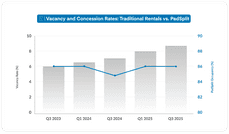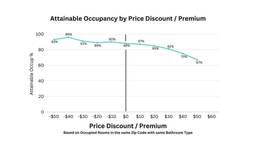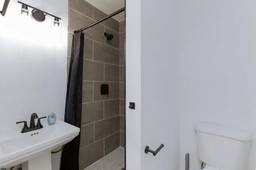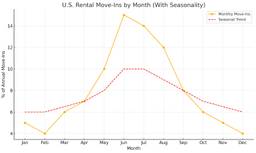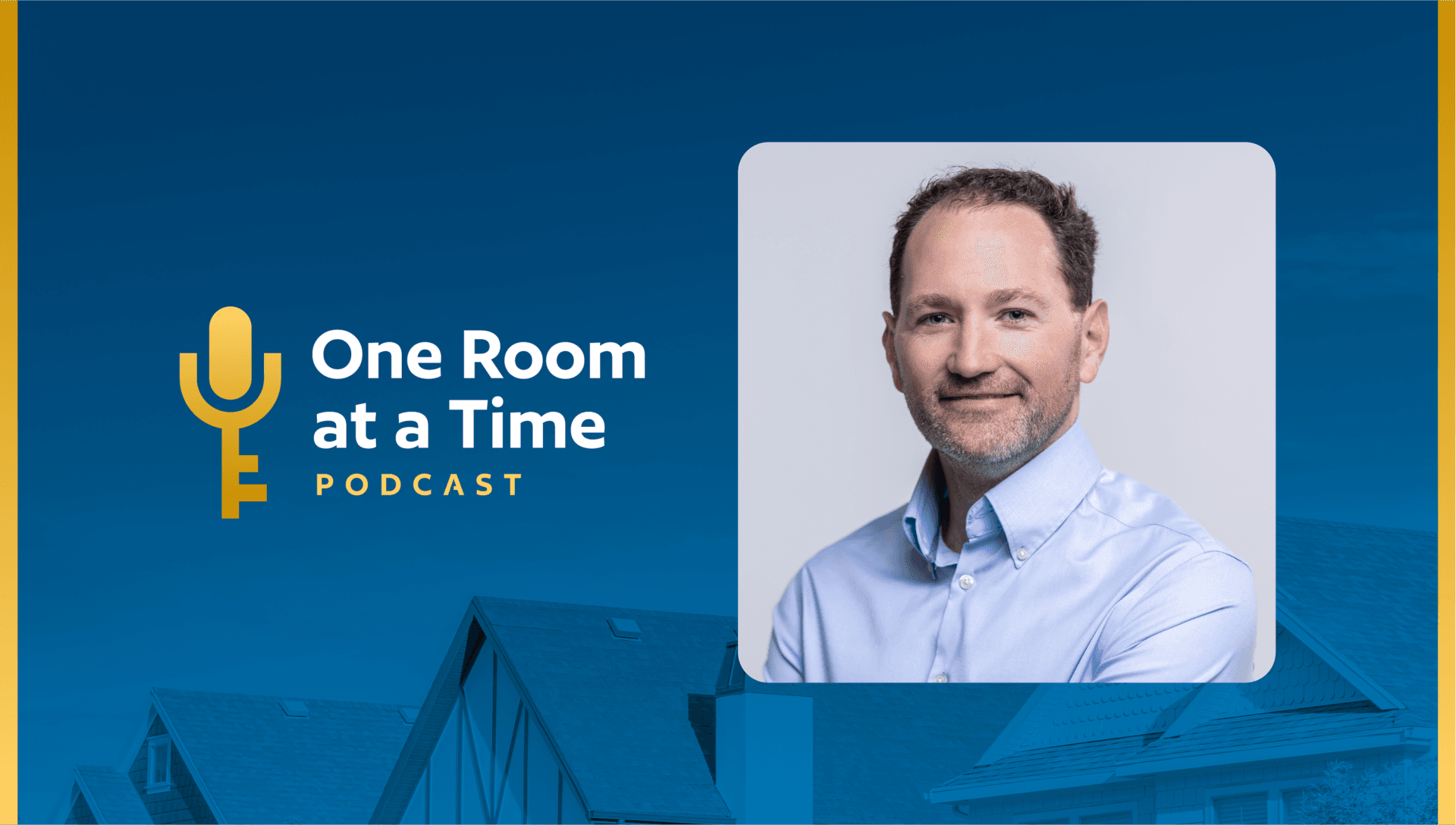Key takeaways
- Seasonality is real, and it’s accelerating. More than half of all U.S. moves happen between May and August, and PadSplit’s data shows churn peaking above 15% during these months.
- Demand softens in winter. From November through February, renter movement slows significantly, requiring hosts to focus on retention and competitive pricing to maintain occupancy.
- Occupancy beats ideal rent. A filled room at 85% of your target rate is far more profitable than an empty one at 100%. Adjusting your pricing proactively protects your bottom line.
- Dynamic operators win. Top hosts monitor performance weekly, benchmark against local concessions, and treat pricing as fluid—not fixed.
- Small changes create big results. Lowering or waiving move-in fees, improving listing photos, and refining descriptions can dramatically boost conversions in slower seasons.
- Adapting isn’t optional. The most successful PadSplit hosts respond quickly to market shifts—balancing flexibility, data, and strategy to keep rooms full year-round.
If you’ve noticed your rooms taking longer to fill lately, you’re not imagining it. Rental markets across the country are shifting, and PadSplit hosts who adapt quickly will come out ahead, while those who wait and hope will watch their occupancy rates drop.
Here’s the reality: You’re competing against multifamily buildings offering one to three months of free rent. Your prospective members are shopping around, and if your pricing doesn’t reflect current market conditions, they’re choosing someone else.
Fortunately, you have more control than you think. Let’s break down what’s happening and what you need to do about it.
Watch this video where Quentin explains how seasonality impacts pricing and what PadSplit hosts are doing to stay competitive.
The data behind the seasonal shift
First, let’s look at the numbers. Understanding when people move (and when they don’t) is critical to optimizing your PadSplit operation.
According to Zillow, approximately 35% of U.S. households live in rental homes, with roughly one-third of renters (33%) moving each year. However, these moves are far from evenly distributed across the calendar—they cluster significantly during peak seasons.
The key takeaway: Over half of all annual moves (51%) happen during just four months—May through August. Meanwhile, the four slowest months (November through February) account for only 17% of annual moves.
What PadSplit’s internal data reveals
Our platform data confirms these national trends and highlights growing challenges:
Summer churn is increasing year-over-year:
- 2023 Peak: 13.7% churn (May)
- 2024 Peak: 14.3% churn (August)
- 2025 Spike: 15.8% churn (May) — a worsening trend
Winter provides relative stability:
- December consistently shows the lowest churn
- 2024: 8.9% churn vs. 12.5% in December 2023
The summer volatility window is expanding: Members are increasingly mobile during May-August, creating both opportunity (if you’re positioned to attract them) and risk (if you’re not prepared to retain or replace them).
Bottom line: June 2025 is projected to see 15%+ churn rates. If you’re not strategically planning for these seasonal swings, you’re leaving significant revenue on the table.
The market reality: Demand has softened
Across multiple PadSplit markets, we’re seeing:
- Multifamily concessions at historic highs, including free rent, waived deposits, flexible lease terms
- Longer vacancy periods for hosts maintaining pre-2024 pricing
- Increased price sensitivity among renters comparing options
This isn’t a crisis, but a seasonal correction. However, it does require you to operate differently than you did six months ago.
The cost of inaction: Every week a room sits vacant costs you more than adjusting your price ever would. A $500/month room empty for four weeks loses you $2,000—far more than you’d lose by dropping your rate by $50-75 to fill it immediately.
The mindset shift: From landlord to PadSplit operator
Here’s where many hosts get stuck: they think about pricing emotionally rather than strategically.
Landlord mindset: “I invested in this property, and I deserve to get my target rent.”
PadSplit operator mindset: “What price maximizes my annual revenue while maintaining high occupancy?”
The best PadSplit hosts understand that occupancy is your superpower. A room rented at 85% of your ideal rate generates infinitely more income than an empty room at 100% of your ideal rate.
Four things you can control this season
1. Dynamic pricing: Match the market, don’t fight it
What to do now:
- Research comparable multifamily listings in your area (use Apartments.com, Zillow)
- Calculate the effective monthly rate after concessions (e.g., a $1,000/month studio with two months free = $833/month effective rate)
- Price your rooms to compete with that effective rate, not the advertised rate
- Consider temporary promotional pricing for new members
Example: If studios nearby are effectively $850/month after concessions, pricing your room at $175-185/week ($700-740/month) makes you the best choice.
2. Rethink move-in fees (or eliminate them temporarily)
If your competitors aren’t charging move-in fees, yours becomes a barrier.
Ask yourself: Is that $100-150 fee worth losing a quality member to a competitor?
Better alternatives for screening:
- Conduct phone or video interviews with prospective members
- Ask specific questions about employment, rental history, and lifestyle
- Work with your PadSplit account executive to establish better verification processes
- Use PadSplit’s background screening
The goal is to fill rooms with quality members, not to create unnecessary friction in the booking process.
3. Optimize your listing: You’re selling value, not just space
Your listing is your 24/7 salesperson. There are easy ways to make it work harder.
- Bright, well-lit images from multiple angles
- Show the full room, not just corners
- Include common areas and amenities
- Add lifestyle shots that help members envision living there
This photo needs improvement:
This photo is what we recommend:
- Lead with your strongest value proposition to grab their attention
- Be specific: “10 minutes to downtown via MARTA” beats “great location”
- List practical amenities: Wi-Fi speed, parking, laundry, storage, patio area
- Address common concerns proactively to offer peace of mind (noise, security, house rules)
Write a compelling title/hook:
- Avoid: “Room Available”
- Good example: “Modern Room Near Airport | All Utilities Included | Private Entrance”
4. Treat your pricing as dynamic, not static
Set a weekly check-in ritual:
Every Monday, review:
- How many views did your listing get last week?
- How many booking inquiries?
- How does your vacancy rate compare to last month?
- What are competitors doing with pricing?
If rooms sit empty for more than two weeks: Reduce your price by 10-15% and measure the results. You can always increase the rates once demand returns in the spring season.
Plan ahead and stay agile to succeed
Keep in mind that different times of year require different approaches as a PadSplit operator:
High-demand periods (May-September):
- Maintain stronger pricing
- Be more selective with Member screening
- Minimize concessions
Shoulder seasons (March-April, October-November):
- Offer competitive rates
- Consider waiving move-in fees
- Emphasize flexibility and move-in readiness
Slow periods (December-February):
- Focus on occupancy over maximum rent
- Offer promotional rates for immediate move-ins
- Keep existing Members happy (they’re gold during slow season)
Common mistakes to avoid
- Waiting for the market to “come back” to your price. The market doesn’t care about your pro forma. Adapt or lose.
- Treating all rooms identically. Your best room can command premium pricing. Your least desirable room needs competitive pricing to move.
- Ignoring local competition. You’re not just competing with other PadSplit properties—you’re competing with studios, shared apartments, and extended stays.
- Assuming screening = high move-in fees. Quality screening comes from asking better questions, not charging more money upfront.
Take action today
Don’t wait for occupancy to drop further. Here’s what you can do now:
Within 24 hours:
- Look up five comparable listings in your area
- Review your listing photos and description
- Calculate your current effective occupancy rate
This week:
- Adjust pricing if you’re 15%+ above effective market rates
- Update your listing with stronger copy and better photos
- Consider temporarily waiving move-in fees if rooms are sitting
This month:
- Establish a weekly monitoring routine
- Connect with your PadSplit account executive about market conditions
- Join the New Host Onboarding course with Quentin to improve your strategy
You’re not alone—we’re here to help
Navigating market shifts is challenging, but you don’t have to figure it out alone.
Get expert guidance:
- Sign up for New Host Onboarding with Quentin, a comprehensive training on optimizing your PadSplit operations
- Connect with your account executive to discuss market-specific strategies
- Join the Official PadSplit Host Community on Facebook to learn from peers in your market
Now is the time to adapt
You didn’t become a PadSplit host to let rooms sit empty. You built this business to generate consistent income while providing affordable housing solutions in your community.
The market has changed, but the fundamentals haven’t. High occupancy beats high pricing every time. Members who stay longer, pay consistently, and refer others are worth far more than an extra $50/week that keeps your room vacant.
The hosts who thrive aren’t the ones who resist change. They’re the ones who stay informed, adjust quickly, and operate with both data and intuition.
Your mission matters. Your business can thrive. But only if you’re willing to adapt.
Adjust your pricing. Improve your listings. Screen smarter, not harder. And remember: the best time to optimize your strategy was yesterday. The second-best time is right now.
Ready to take your PadSplit operation to the next level? Reach out to your account executive today or sign up for New Host Onboarding. Success isn’t about hoping the market changes—it’s about knowing exactly what to do when it does.
